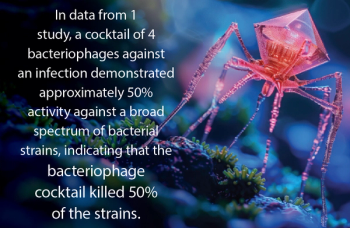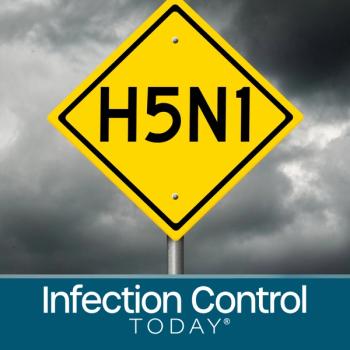
Antibiotic-Resistant Bacteria Widespread in Hudson River, Study Finds
The risk of catching some nasty germ in the Hudson River just started looking nastier. Disease-causing microbes have long been found swimming there, but now researchers have documented antibiotic-resistant strains in specific spots, from the Tappan Zee Bridge to lower Manhattan. The microbes identified are resistant to ampicillin and tetracycline, drugs commonly used to treat ear infections, pneumonia, salmonella and other ailments. The study is published in the current issue of the Journal of Water and Health.
A new study finds widespread presence of antibiotic-resistant bacteria in the Hudson River. Coauthor Gregory OMullan (right) collects samples on the lower Hudson. (Kevin Krajick)
The risk of catching some nasty germ in the Hudson River just started looking nastier. Disease-causing microbes have long been found swimming there, but now researchers have documented antibiotic-resistant strains in specific spots, from the Tappan Zee Bridge to lower Manhattan. The microbes identified are resistant to ampicillin and tetracycline, drugs commonly used to treat ear infections, pneumonia, salmonella and other ailments. The study is published in the current issue of the Journal of Water and Health.
If you find antibiotic-resistant bacteria in an ecosystem, its hard to know where theyre coming from, says study co-author Andrew Juhl, a microbiologist at Columbia Universitys Lamont-Doherty Earth Observatory. In the Hudson, we have a strong case to make that its coming from untreated sewage.
On repeated visits to 10 locations on the Hudson, the researchers found microbes resistant to ampicillin 84 percent of the time, and resistant to tetracycline 38 percent of the time. The stretches harboring the most sewage-indicator bacteria also generally contained the most antibiotic-resistant ones. These were led by Flushing Bay, near LaGuardia Airport, followed by Newtown Creek, on the border of Brooklyn and Queens; and sewage outfall pipes near Piermont Pier in Rockland County, N.Y.; West 125th Street in Manhattan; and Yonkers, in Westchester County, N.Y.. The antibiotic-resistant bacteria found include potentially pathogenic strains of the genera Pseudomonas, Acinetobacter, Proteus and Escherichia.
They could be difficult to treat in people with compromised immune systems, says Dr. Stephen Morse, an infectious disease epidemiologist at Columbias Mailman School of Public Health, who was not involved in the study. If I were inclined to swim in the Hudson, quite truthfully Id look to this paper for the places to stay away from.Â
Though people routinely catch infections while swimming, only severe illnesses are typically treated with antibiotics. And an antibiotic-resistant infection would be noted only if the illness failed to respond to treatment--a scenario that probably happens, but is not well documented or reported, said Morse. One exception was an outbreak on the Indonesian island of Borneo in 2000 when 32 athletes competing in a swimming event in the Segama River came down with leptospirosis. Transmitted by animal urine, the infection is marked by fever, chills and pink eye.
Previous studies in the Hudson have shown that microbe counts go up after heavy rains, when raw sewage is commonly diverted into the river. Some 27 billion gallons of raw sewage and rainwater are released into the Hudson each year by wastewater treatment plants. Lacking the capacity during heavy rains to simultaneously pump runoff from city streets and sewage from buildings, many sewage-treatment plants are forced to divert both streams into the river, in what is known as a combined-sewer overflow, or CSO. In an ongoing partnership with the environmental group Riverkeeper, scientists at Lamont-Doherty and Queens College at the City University of New York have been tracking water quality in the Hudson and making their results public on Riverkeepers website. Their work has confirmed that CSOs remain a serious problem, even though the Hudson is generally cleaner than it has been in the past.
The Hudson has gotten so much better, says the studys lead author, Suzanne Young, a former student at Lamont and Queens College, now at the University of South Florida. If we came up with a sustainable solution, water quality could continue to improve.
This is not the first time that antibiotic-resistant bacteria have been found in a river. A 2002 study in the journal Emerging Infectious Diseases found ampicillin-resistant bacteria in the Hudson, as well as 15 other U.S. rivers, including the Mississippi, Ohio and Colorado. However, this is the first study to firmly link specific microbes to sewage in the Hudson, and to compare results at different locations.
Newtown Creek on the border of Brooklyn and Queens consistently shows high counts of sewage-indicator bacteria, and now, those resistant to antibiotics. Andrew Juhl collects samples after Hurricane Sandy. (Kim Martineau)
It is not just a matter of swimming safely. Rivers can incubate bacteria, allowing them to transfer their drug-resistant genes to normal bacteria. If these resistant genes are transferred, they can develop into disease-causing bacteria, says Ronald J. Ash, a microbiologist and professor emeritus at Washburn University, lead author of the 2002 paper.
Bacteria can also play an important role in the environment. As more antibiotic-resistant microbes replace native bacteria, those changes could eventually have an impact on plants and animals. Microbial communities can affect the health of the entire ecosystem, says Young, who is now studying how Mississippi water snakes respond to infection with antibiotic-resistant pathogens.
Antibiotic resistance has become a public health crisis. About 100,000 people die each year from hospital-acquired infections, most of which are due to antibiotic-resistant pathogens, according to the Infectious Diseases Society of America. Superbugs resistant to methicillin kill about 19,000 people each year, more than HIV/AIDS. The development of resistance has been linked to overuse of antibiotics to treat minor infections in humans, and to industrial feedlots, where low levels of antibiotics are fed to chicken, cattle and pigs to promote growth and prevent infection. The Natural Resources Defense Council estimates that 80 percent of antibiotics in the U.S. are fed to livestock.
There are signs that the tide is turning, at least in the Hudson. In a landmark deal with the state, New York City agreed last year to spend $187 million to replace some parking lots and city streets with porous pavement, and to plant more vegetation on rooftops and other impervious surfaces to reduce runoff. An additional $2.4 billion will be spent on infrastructure to eliminate 1.5 billion gallons of CSOs by 2030. Theres now a timeline for answering the question, How much sewage overflow reduction is needed and when? said Larry Levine, a senior attorney at the Natural Resources Defense Council, which. pushed for the settlement.
Public awareness may also help. In 2012, New York Gov. Andrew Cuomo signed the Sewage Pollution Right to Know Law requiring public notification of sewage spills in New York waters. Not long after the law passed, Westchester County announced a controlled discharge at Sleepy Hollow, sparking a debate about whether the National Ironman competition should cancel its swimming leg 15 miles to the south. (The swim went ahead as planned).
The results from this study are significant because they help us to understand the processes involved in the spread of antibiotic resistant bacteria through the environment, but also because they provide added incentive to reduce sewage pollution into our waterways says coauthor Gregory OMullan, a microbiologist with joint appointments at Lamont and Queens College who oversees the laboratory where the study was done.
Â
Â
Newsletter
Stay prepared and protected with Infection Control Today's newsletter, delivering essential updates, best practices, and expert insights for infection preventionists.






